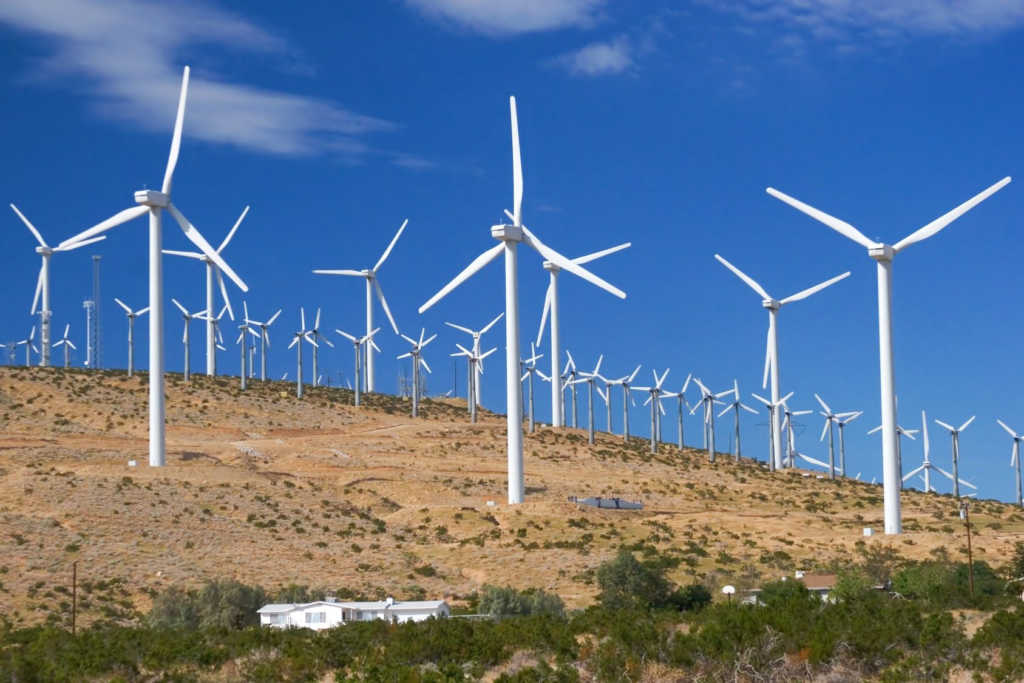India is on the way to a ‘great leap forward’ in clean and renewable energy sector. Globally, India stands 4th in wind power, 5th in renewable power and 6th in solar power installed capacity. Since Modi government came to power and India signed Paris agreement, there has been great push for clean and renewable energy. In four years of Modi government solar energy capacity has increased by 8 times from 2.63 GW in 2014 to 22 GW. Wind energy capacity increased by 1.6 times from 21 GW in 2014 to 34 GW. RK Singh led Ministry of Renewable Energy (MRE) has revised the target of 175 GW renewable energy generation by 2022 to 227 GW. An analysis by International Renewable Energy Agency (IRENA) says that the renewable energy sector created 47,000 new jobs in the country in 2017, accounting for over 20 percent of 5 lakh new green jobs created globally.
However, India still has great potential for offshore wind energy which remains underexploited. Offshore wind energy is produced by constructing wind farms in bodies of water. India has a vast coastline on western and eastern side. The coastline extends from Arabian Sea which touches states of Rajasthan, Gujarat, Maharashtra, Goa Karnataka, Kerala, and Tamil Nadu while Bay of Bengal touches West Bengal, Odisha, and Andhra Pradesh. These states could exploit offshore wind energy to meet their energy requirements. Currently, Ministry of New and Renewable Energy has set a target of 5GW energy generation through offshore winds capacity installation by 2022. Renewable energy ministry has already floated Expression of Interest (EOI) for 1GW offshore wind energy generation on western coast on India. A total of 34 companies including many big foreign firms like Shell and Senvion responded to the call of ministry.
Institute for Energy Economics & Financial Analysis (IEEFA) has projected an exponential rise with a capacity of 30GW by 2030. The technology in offshore wind energy has witnessed a significant rise in 21st century. According to institute’s estimate, Asian economies will have 100GW capacity by 2030 of which India and China would represent equally 30-30 percent. The rest of major contribution is expected to come from South Korea (18 Gw), Japan (10 Gw), Taiwan (5.5 Gw), Indonesia, Philippines and Vietnam. The study in National Off-Shore Wind Policy suggests a good potential for offshore wind capacity on southern tip and western coast. On the global scale, UK, Germany, Denmark, Netherlands & China are leaders in the sector. As of now total global capacity is around 17 to 18 GW. The largest installation is in United Kingdom named Walney Wind Farms with a capacity of 659 MW, located in Irish Sea.
India still lags behind in renewable energy sector in comparison to most developed economies. As of 2014-15, 44 percent of country’s energy requirements are met through coal and 19 percent through oil, and 6 percent through Gas. India have abundant amount of coal with the country being fourth largest producer with fifth largest reserves in the world. But above two third of oil and gas requirements are met through imports which makes a large chunk of our total import bill. Progress in renewable energy will be good for environment as well as save foreign reserves. Energy use in India has almost doubled since 2000, although per capita consumption is only around a third of the global average. If the growing energy demand is met through fossil fuels, then it would be very harmful on the environment and on human health. Therefore, it is very important that the government to make investment in the field of renewable energy.
